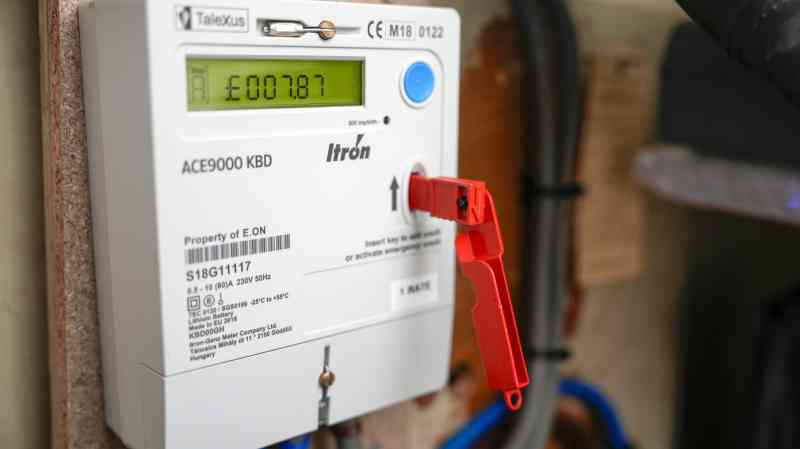Why first-time buyers are still getting a raw deal
When Louise Mitchell bought a 25 per cent share of a one-bedroom east London flat, she never expected that she would still be there 11 years later.
Mitchell, whose name has been changed, used the government’s shared ownership scheme, which allows you to buy a portion of a home and then pay a reduced rent on the rest to a housing association. “It was really marketed as a firm step on to the housing ladder,” she said.
Mitchell, 47, paid off her £52,000 mortgage with some inheritance money in 2017 but said she would struggle to save enough to buy anything bigger than a flat in London, especially now that her rent and service charge have more than doubled from £360 a month in 2013 to £795.
Mitchell also thinks that such high costs, along with concerns about blocks of flats since the Grenfell disaster will put buyers off. Her flat has been unsellable since the 2017 fire because of its cladding, which is finally being removed.
“I’m in my late forties and want to be in a house with a garden, but I am stuck here,” Mitchell said. “It was supposed to help me move up, but I can’t. I haven’t benefited at all from the scheme.”
Shared ownership is not the only scheme that aimed to help first-time buyers on to the ladder, but many of the others have also proved disappointing. The Help to Buy equity loan scheme gave first-time buyers a 20 per cent loan (40 per cent in London) interest-free for five years. A total of £24.7 billion was lent out to finance 387,195 homes, but because it was only available on new builds it was criticised for artificially inflating house prices and developers were accused of cashing in. An investigation by Money last year revealed that one in eight properties had lost value by the time homeowners repaid their loans.
Help to Buy ended in March last year, but there are other schemes still available. We look at what they offer — and the drawbacks.
Introduced in the 1980s as a form of affordable housing, shared ownership is available to those with a household income of £80,000 or less — £90,000 in London. The idea is that homeowners initially buy a smaller stake in a property, typically 25 per cent, to make it more affordable and then increase that stake over time through what is known as staircasing. There were 17,126 such private sales in 2022-23 according to government figures, up from 7,734 in 2014-15. Some 7 per cent of first-time buyers used the scheme last year.
“Given that the deposit requirement tends to be 10 per cent of the share purchased, share ownership is relatively accessible even with low savings and higher mortgage rates,” said David Fell from the estate agency Hamptons.
But the scheme has been widely criticised. In March the levelling up, housing and communities committee said that shared ownership was “drastically failing to deliver an affordable route to homeownership for too many people”. It cited rising rents, high service charges and complex leases among the key issues.
Rent payments usually start at 2.75 per cent of the proportion of the property you do not own and rise every year, usually in line with inflation plus 0.5 percentage points.
• Here’s the one thing Labour could do to help first-time buyers
Floris ten Nijenhuis from the app Stairpay, which educates people on the long-term costs of shared ownership, says those who do not staircase (either because they cannot afford to or choose not to) may be paying more than private renters after about seven years. Only about 2 per cent of shared owners had staircased to 100 per cent last year, Hamptons said.
There are other costs to consider too: even if you only own 25 per cent of the property you are liable for all repairs and maintenance. You will also have to pay all the fees associated with homebuying each time you staircase, including legal fees. You will pay stamp duty on your initial purchase and when your share goes beyond 80 per cent.
Selling a shared ownership property can be tricky too. You can normally only sell the share you own, and housing associations may have stipulations about your buyer. You may have to sell it back to the association you bought it from.
Paula Higgins from the advice service the HomeOwners Alliance said: “For the first few years people are delighted because they’re not renting, they feel they have the security of owning somewhere. Then you see satisfaction start to drop.
“There needs to be more upfront information about the full life cycle of costs for shared ownership, not just for year one.”
In 2015 the Help to Buy Isa was introduced, then replaced by the Lifetime Isa in April 2017. Both accounts pay a 25 per cent government bonus on money saved towards your first home. You can save £200 a month into a Help to Buy Isa and up to £4,000 a year into a Lifetime Isa.
Unsurprisingly the accounts have been popular. The Help to Buy Isa was used to buy 601,476 properties worth a total of £107 billion between December 2015 and March, while 171,050 people have so far used £2.19 billion saved in Lifetime Isas to buy their first home.
But some savers have found that their accounts are not as useful as they hoped. Both have a limit on the value of the property you can buy: up to £250,000 for the Help to Buy Isa (£450,000 in London) and £450,000 for the Lifetime Isa. These thresholds have not increased since the accounts were introduced, though the average first-time buyer property price went up 40 per cent from December 2015 to £241,502 in June. If the £450,000 threshold had increased in line with this, it would be £630,000 today.
Lifetime Isa holders who want to buy a property above the limit must pay a 25 per cent penalty to withdraw their money, which means they lose their government bonus and some of their own savings. Penalties totalled £47.2 million in 2022–23. While there is no penalty on withdrawing money from the Help to Buy Isa, it has a lower house price limit.
Matt McKenna from the financial research site Finder said: “This is a ridiculous situation. A substantial number of people now face difficult decisions over what to do with savings they have carefully grown over years.”
Natalie Pringle wants to use the £25,000 she has saved in a Lifetime Isa to buy a home. But she lives in southwest London and is worried that she will not be able to find a property within the £450,000 limit. If she has to withdraw her money, she could lose more than £6,000, so she has stopped saving into her Isa.

“The penalties and price limit can make the account redundant in a lot of cases. If I had to pay a penalty, this would really set me back,” said Pringle, 35, who is a business development manager. “The scheme is intended to incentivise people to save but all the restrictions seem to go against its original purpose.”
In April 2021 the government introduced a mortgage guarantee scheme to encourage banks to offer mortgages to those with a smaller deposit.
The proportion of new mortgages taken out at between 90 and 95 per cent loan to value (LTV) fell from 4.15 per cent in the final quarter of 2019 to just 0.8 per cent a year later, according to the Financial Conduct Authority, the City regulator. These deals all but disappeared during the pandemic amid concerns about falling house prices and widespread defaults.
The scheme meant that banks could buy insurance on a 95 per cent LTV mortgage in case the borrower defaulted. Participating lenders include Barclays, Halifax, HSBC, Lloyds, NatWest and Santander.
But take-up has been low, with only 38,156 of1.03 million first-time buyer loans underwritten by the scheme between its introduction and March.
Part of the problem is that rates on low-deposit deals are usually much higher, so many first-time buyers would prefer to wait until they have a larger deposit. The best two-year fixed rate for someone with a 5 per cent deposit is 5.45 per cent from Monmouthshire Building Society. Monthly repayments on a £200,000 25-year mortgage would be £1,222.
• Compare mortgage deals
With a 15 per cent deposit the best rate falls to 4.69 per cent from NatWest. Monthly repayments on the same loan would be £1,133, saving £1,068 a year.
“This scheme did improve competition and choice, which is important, but borrowers still need to meet affordability assessments, which can be a challenge,” said Paul Broadhead from the Building Societies Association.




Post Comment